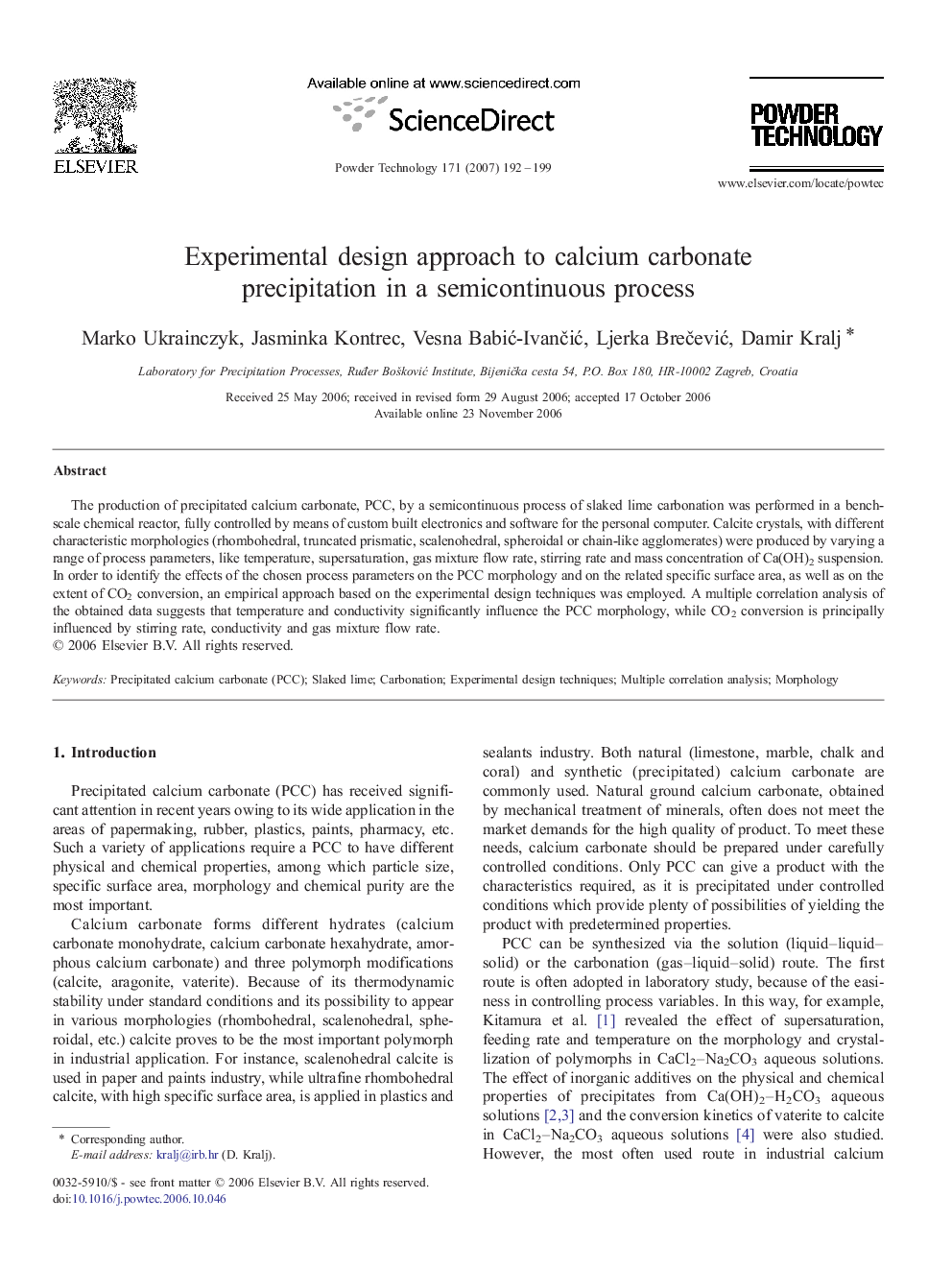| Article ID | Journal | Published Year | Pages | File Type |
|---|---|---|---|---|
| 239231 | Powder Technology | 2007 | 8 Pages |
The production of precipitated calcium carbonate, PCC, by a semicontinuous process of slaked lime carbonation was performed in a bench-scale chemical reactor, fully controlled by means of custom built electronics and software for the personal computer. Calcite crystals, with different characteristic morphologies (rhombohedral, truncated prismatic, scalenohedral, spheroidal or chain-like agglomerates) were produced by varying a range of process parameters, like temperature, supersaturation, gas mixture flow rate, stirring rate and mass concentration of Ca(OH)2 suspension. In order to identify the effects of the chosen process parameters on the PCC morphology and on the related specific surface area, as well as on the extent of CO2 conversion, an empirical approach based on the experimental design techniques was employed. A multiple correlation analysis of the obtained data suggests that temperature and conductivity significantly influence the PCC morphology, while CO2 conversion is principally influenced by stirring rate, conductivity and gas mixture flow rate.
Graphical abstractThe production of precipitated calcium carbonate, PCC, by a semicontinuous process of slaked lime carbonation was performed in a fully controlled bench-scale chemical reactor. A multiple correlation analysis of the obtained data suggests that temperature and conductivity significantly influence the PCC morphology, while CO2 conversion is principally influenced by stirring rate, conductivity and gas mixture flow rate.Figure optionsDownload full-size imageDownload as PowerPoint slide
